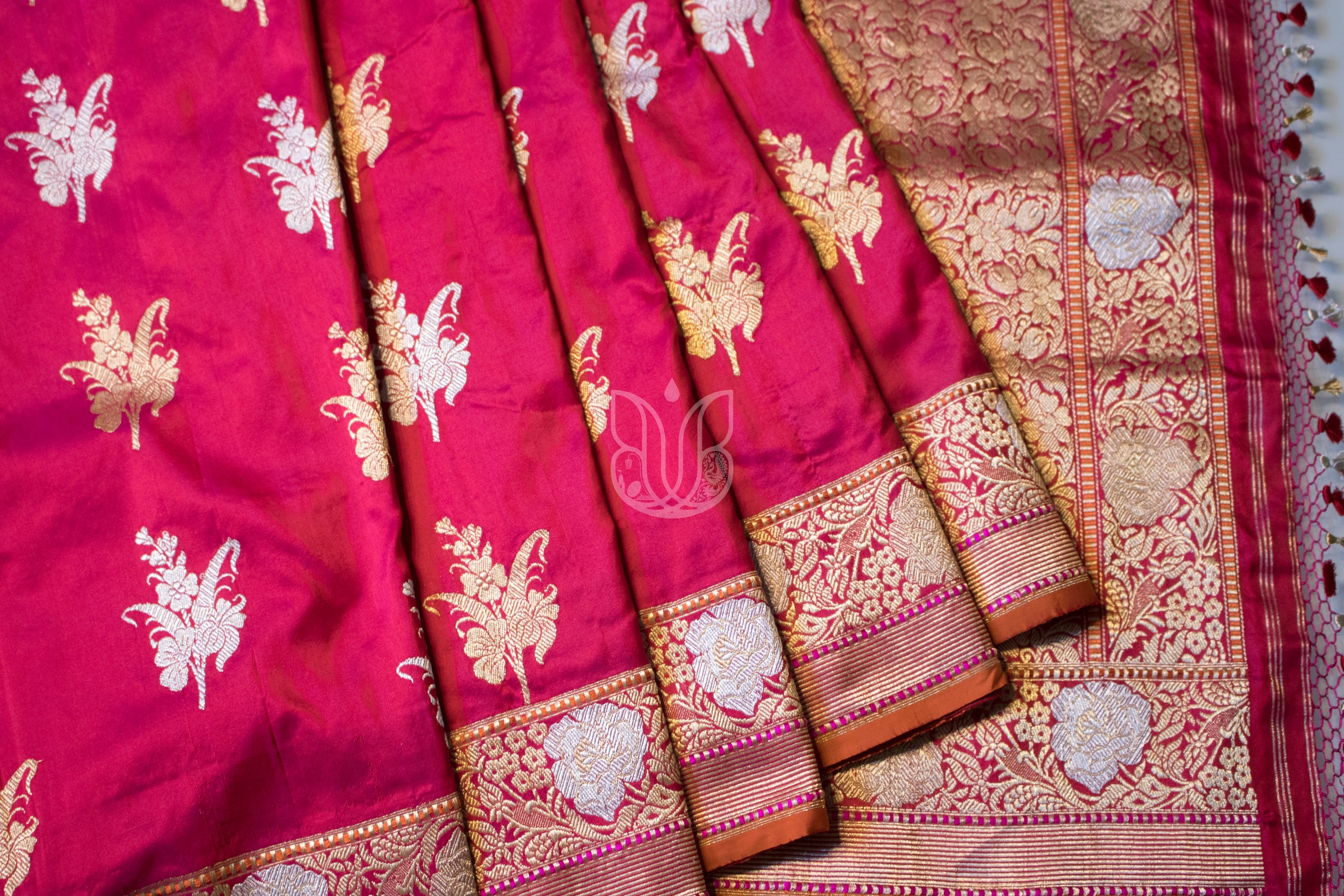Silk does for the Body what Diamonds do for the Hand

The world famous designer, Oscar De La Renta strongly believed that silk not only increases the appeal of the dress but also adds more grace to it. We cannot agree more to it as even today, silk is considered to be a luxury good.
Silk is a strong and lustrous fiber that's mostly produced by fibers from silkworm cocoons.
It is often an expensive cloth and fancy clothes, upholstery or curtains made of silk are super soft and satiny, giving off an almost glossy sheen. Today, India is the second largest producer of silk and its industry in India is one of the largest generators of employment and foreign exchange for the country as sericulture activities spread across 52,360 villages. But how did silk make its debut in India? And how did it survive all these years all the while managing to remain a fabric of finest quality?
Let's get our history books out because it is time to delve deeper into the ancient saga of silk.
India’s textile history is rich and complex, with its silk production dating back to 4000 years ago in the cities of Harappa and Mohenjo Daro i.e. , the Indus Valley Civilization. With a number of indigenous silk moths, many of whose cocoons are suitable for weaving, India’s silk history is vastly different from that of other countries. However, silk is originally believed to be born in China from where the processing techniques of degumming and reeling were adopted by the artisans. Traders introduced Chinese silk cloth to India where it gained immense popularity amongst the royal people being such a soft and glimmery piece of cloth.
According to one such account in historical notes, a Buddhist monk is credited with bringing the Chinese techniques of silk-reeling to India during the Gupta period (AD 400-600). It is presumed that he brought the eggs of the Bombyx mori, as the technique of reeling was done with this particular type of cocoon, and so the journey of silk began in India.
As any other thing that has made a huge impact on India’s heritage, silk manufacture also,within time, developed its own customs surrounding the care and gathering of wild cocoons and have become ritualized by the people of India. Tribal people consider the silk forests sacred and protect the caterpillars from predators and harvest the cocoons. By the Hindus specially, silk was deemed to be a very pure cloth and was made a part of heritage and tradition in various parts of the country.
India has also developed the art of draping cloth, also more popularly known as the saree. A saree is a length of unsewn material that is draped, with over a hundred variations of doing so and uncountable regionally dictated decoration. Amalgamating the concept of saree and silk cloth has given India one of the most celebrated and popular traditional cloth, called a silk saree.
The Indian silk sarees are known for their lustrous beauty and incomparable diversity of designs and colors. These sarees are now known to be the traditional bridal wear for most of the Indian brides.The traditional south Indian sarees, especially, are made of pure silk and are known worldwide for its aesthetic beauty and glamor.
With time passing, various types of silk came into being with artisans getting more creative and discovering so many different types of silk which are now available to everyone. Today, there are four types of natural silk produced in India for commercial purposes, these are known as Mulberry silk, Tasar silk, Muga silk, and Eri silk. Among these four kinds, Mulberry silk contributes to more than 80% of the silk produced in the country.
The Silk fabric is known as Paat in East India, Pattu in South India and Resham in North India and identifies as a natural fiber produced from the cocoons of mulberry silkworm via a process called Sericulture. These yarns produced from the process of sericulture are in turn used to weave a variety of textiles. Almost 97% of raw silk is produced in the five Indian states of Karnataka, Andhra Pradesh, Tamil Nadu, West Bengal and Jammu and Kashmir. The tradition of wearing Indian silk sarees for marriages and other propitious ceremonies has become a custom in Assam and southern parts of India. Silk is considered to be a symbol of royalty, and class. Historically, silk was used primarily by the upper classes. Silk fabric is used in various forms like making sarees, sport cloths and even home furnishing. It’s a symbolization of richness and class. In some clothing, silk is blended with cotton to give more bandwidth to the fabric, strength, and stain resistance.
On the whole, India is a vast repository of ancient motifs, techniques and ideas and is unique among silk-producing countries in the rich variety of silks it produces. India ranks second, after China, among mulberry silk producers and the largest proportion of this silk is produced in Karnataka. India is also the second largest producer of tussar silk. Not just that, India is the largest consumer of silk too!
The journey of silk has surely been very interesting and capricious to say the least, when it comes to India and has left such a long lasting impression on the world, that right now I can say with full confidence that silk has been and will always be a very important textile for India.


Facebook Instagram